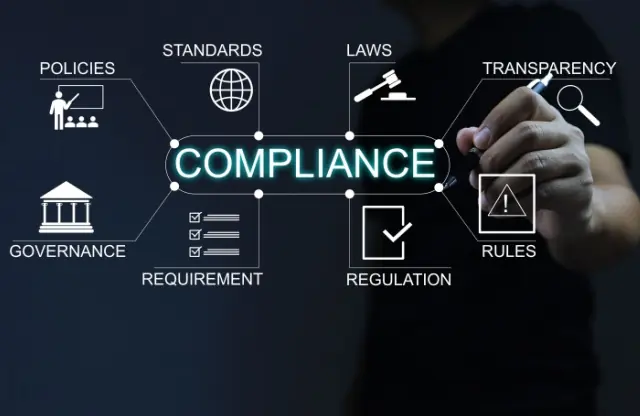
Every business thrives on finding and keeping the best talent, and recruitment and selection policy design plays a vital role in making that happen. A well-thought-out policy streamlines your company’s recruitment and selection process and sets clear hiring process guidelines. It helps ensure fair workforce selection criteria and smooth job candidate screening. Whether you’re a creative agency hiring for graphic design roles or a corporate firm building your team, having a robust talent acquisition policy is essential.
Designing an effective policy isn’t just about ticking boxes. It’s about creating a structured framework that aligns with your company’s goals, while still being adaptable to changing needs. The right design elements ensure the process is consistent, efficient, and appealing to candidates. In this article, we’ll walk you through everything you need to know about recruitment and selection policy design.
We’ll start by exploring what this policy is and why it’s crucial. Then, we’ll break down its key components and provide actionable steps to create one. You’ll also discover the benefits of having a strong policy, from attracting top talent to boosting hiring efficiency. Lastly, we’ll share best recruitment and selection policy design practices to help you stay ahead in the hiring game. Let’s get started!

What is a Recruitment and Selection Policy?
A recruitment and selection policy is a structured framework that explains how an organization attracts, evaluates, and hires employees. It is part of the broader human resources management policy and ensures the hiring process aligns with the company’s goals and values. The policy provides clear steps for job vacancy announcements, candidate assessments, and final selection.
Having a structured recruitment and selection policy helps streamline the hiring process. It incorporates effective recruitment techniques, ensuring each stage—from writing job descriptions to conducting interviews—is organized and efficient. This approach supports the HR department in managing hiring smoothly, reducing the time it takes to fill positions and selecting the most suitable candidates.
Consistency and fairness are essential in recruitment. A well-defined policy uses standardized workforce selection criteria to test candidates impartially. By aligning with business goals, the policy ensures new hires have the right skills and are a good fit for the company culture, ultimately improving organizational performance.

Key Components of a Recruitment and Selection Policy
A well-crafted recruitment and selection policy is vital for organizations to attract and hire the best candidates. It sets clear procedures and standards for the recruitment process, ensuring consistency and alignment with company goals.
Objectives and Scope
This policy defines its purpose and specifies which roles it covers. It outlines how attracting and selecting candidates supports the organization’s objectives. This clarity ensures all recruitment activities are intentional and contribute to the company’s success.
Equal Opportunity and Diversity
A commitment to equal opportunity and diversity is central to fair hiring practices. The policy emphasizes attracting a diverse range of candidates and ensuring that the selection process is free from bias. This approach promotes fairness and enriches the workplace with varied perspectives and ideas.
Hiring Process Stages
a. Job Requisition
A job requisition is the first step in the recruitment process. It involves identifying the need to create a new position or fill a vacancy. This stage ensures the recruitment and selection policy begins with clarity about the role’s purpose and alignment with organizational goals.
b. Job Description Creation
Crafting a clear and detailed job description is essential. It outlines the role’s responsibilities, required skills, and qualifications. This document is a foundation for attracting and selecting suitable candidates, ensuring the recruitment process targets the right talent pool.
c. Job Vacancy Announcement
Job vacancy announcements communicate available roles to potential applicants. This involves using relevant channels like job boards, social media, and company websites. Effective business communication ensures the message reaches the right audience, maximizing visibility and engagement from interested candidates.
d. Application Screening
The application screening stage involves reviewing submissions to identify candidates for interviews. Using effective recruitment techniques and predefined criteria, recruiters filter applications to shortlist candidates who meet the role’s specific requirements, ensuring a focused recruitment process.
e. Interviews
Interviews assess a candidate’s qualifications, skills, and cultural fit. This critical stage involves interactive discussions to evaluate whether the candidate aligns with the job description and the organization’s values. A structured interview process ensures consistency and fairness in candidate evaluation.
f. Selection Decision
After completing assessments, the hiring team selects the best candidate. This decision is based on interview performance, skillsets, and alignment with the company’s needs, ensuring an informed choice that benefits both the company and the candidate.
g. Job Offer and Onboarding
Once the final candidate is chosen, the company extends a job offer. The employee onboarding policy then ensures the new hire transitions smoothly into their role. Onboarding includes introducing the candidate to company culture, their team, and necessary tools, fostering a productive start.
Compliance Requirements
Adhering to legal considerations is crucial in the recruitment process. The policy ensures compliance with employment laws and regulations, such as anti-discrimination statutes and labor laws. This adherence protects the organization from legal issues and upholds ethical standards in hiring.
Review and Feedback Mechanism
Regular evaluation of the recruitment and selection policy is vital for continuous improvement. The policy outlines procedures for collecting feedback from stakeholders involved in the recruitment process. The HR department can then use it to make necessary adjustments. In turn, this ensures that the policy remains effective and aligned with the organization’s evolving needs.
Incorporating these key components ensures that the recruitment and selection policy design is comprehensive, fair, and aligned with organizational objectives.

Steps to Design a Recruitment and Selection Policy
Designing an effective recruitment and selection policy is crucial for organizations to attract and keep top talent. A well-designed policy ensures that the hiring process is systematic, compliant, and aligned with the company’s objectives. The following steps provide a clear roadmap for creating such a policy:
1. Understand Organizational Needs
Begin by analyzing your organization’s current and future workforce requirements. Assess which roles are essential and identify any skill gaps. This understanding ensures that the recruitment and selection policy aligns with strategic goals and addresses specific staffing needs.
2. Engage Stakeholders
Collaborate with HR professionals, hiring managers, and leadership to gather diverse perspectives. Effective business communication among these stakeholders ensures the policy reflects various departmental needs and promotes a unified approach to hiring.
3. Draft Policy Framework
Structure the policy by outlining key sections, such as objectives, scope, procedures, and compliance standards. Ensure clarity and completeness to provide a comprehensive guide for the recruitment process. This framework serves as an employee selection framework, detailing each step from job posting to onboarding.
4. Incorporate Technology
Integrate recruitment tools and software, like applicant tracking systems (ATS), to enhance efficiency. These technologies streamline the hiring process, assist in managing applications, and support compliance with recruitment standards.
5. Pilot and Refine
Test the policy on a small scale to identify potential issues. Gather feedback from participants and analyze recruitment metrics and KPIs to assess effectiveness. Use this data to make necessary adjustments, ensuring the policy is both practical and compliant with legal requirements.
By following these steps, organizations can develop a recruitment and selection policy design that is efficient, inclusive, and aligned with their strategic objectives.

Benefits of an Effective Recruitment and Selection Policy
A well-designed recruitment and selection policy offers significant benefits, making it essential for organizations to invest in its development.
Improved Hiring Efficiency
A structured policy simplifies the hiring stages, making recruitment faster and more effective. Clear procedures help organizations identify and choose the right candidates, reducing time-to-hire and cutting related costs.
Enhanced Employer Brand
Fair and transparent hiring practices boost an organization’s reputation as a professional and fair employer. A commitment to diversity and inclusion in hiring attracts top talent and strengthens the company’s position in the job market.
Reduced Turnover Rates
An effective policy ensures new hires align with the role and organizational culture. This alignment improves job satisfaction and retention, reducing turnover rates and the expenses of frequent rehiring.
Legal Compliance and Risk Mitigation
Following recruitment compliance standards and legal requirements reduces the risk of lawsuits or penalties. A compliant policy ensures fair and transparent hiring practices that align with employment laws, protecting the organization from legal challenges.
Scalability
A recruitment and selection policy grows with the organization. It can adapt to new roles, departments, and locations, ensuring consistent and efficient hiring practices as the company expands.
Investing in a strong recruitment and selection policy design improves efficiency and supports long-term success for the organization.

Best Practices for Recruitment and Selection Policy Design
Designing an effective recruitment and selection policy is essential for businesses aiming to attract and retain top talent. Implementing best practices helps organizations create an effective and sustainable recruitment and selection policy. This helps them save time and improve hiring outcomes.
Customization for Organizational Needs
Tailor the policy to align with your company’s goals and culture. Avoid one-size-fits-all approaches. Instead, focus on designing policy documents that address specific business needs. Customization ensures the policy helps choose the right candidates and supports long-term organizational objectives.
Incorporating Metrics for Success
Include recruitment metrics and KPIs, such as time-to-hire, cost-per-hire, and candidate satisfaction, in the policy. These metrics provide insights into the success of your effective recruitment techniques and help identify areas for improvement. Tracking metrics ensures the process stays efficient and aligned with business goals.
Flexibility and Adaptability
Make the policy flexible enough to adapt to changing market trends and talent requirements. An adaptable policy ensures your company remains competitive and responsive, helping to choose the right candidates even in dynamic hiring environments.
Training and Communication
Train HR teams and hiring managers on how to apply the policy effectively. Clear communication is essential for consistent implementation. This step ensures you follow effective recruitment techniques. In turn, the policy achieves its intended outcomes.
Regular Policy Audits
Review the policy regularly to ensure compliance with laws and relevance to current industry needs. Audits keep the policy updated, effective, and legally compliant, ensuring the employee recruitment and selection policy design evolves with the organization.
By following these best practices, businesses can create a recruitment and selection policy that supports their strategic goals while saving time and enhancing hiring efficiency.

Synapse – Your Go-To Agency for Policy Document Design
A well-designed recruitment and selection policy can revolutionize how organizations attract and hire top talent. Clear procedures, legal compliance, and alignment with business goals ensure efficiency, fairness, and long-term success. However, creating these documents demands expertise in both HR processes and professional design.
At Synapse, India’s top creative agency, we specialize in designing policy documents that are clear, visually appealing, and aligned with your organizational goals. For example, we crafted Mahindra’s Company Code of Conduct, combining professionalism with readability for effective business communication. Whether it’s recruitment policies or an IT policy document, we provide tailored solutions to meet your company’s needs.
We invite you to explore our portfolio for a glimpse of our wide range of work. Visit our Services page for detailed insights. To get started, connect with us at 1800 121 5955 (India), email contact@synapse.co, or reach out via WhatsApp. Or, fill out the Contact form on our website with your project details, and our team will respond. Partner with us to create impactful documents that support your organization’s growth and success.







